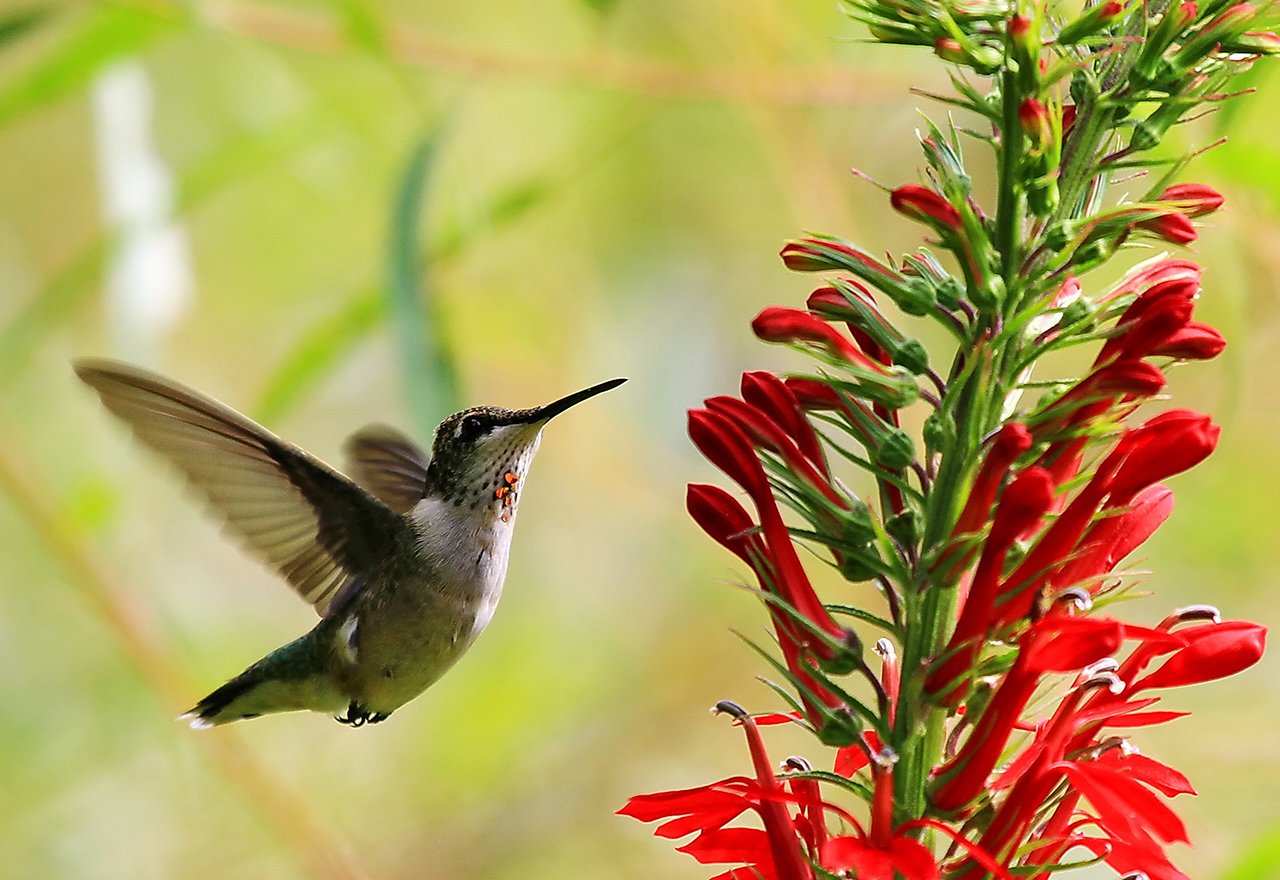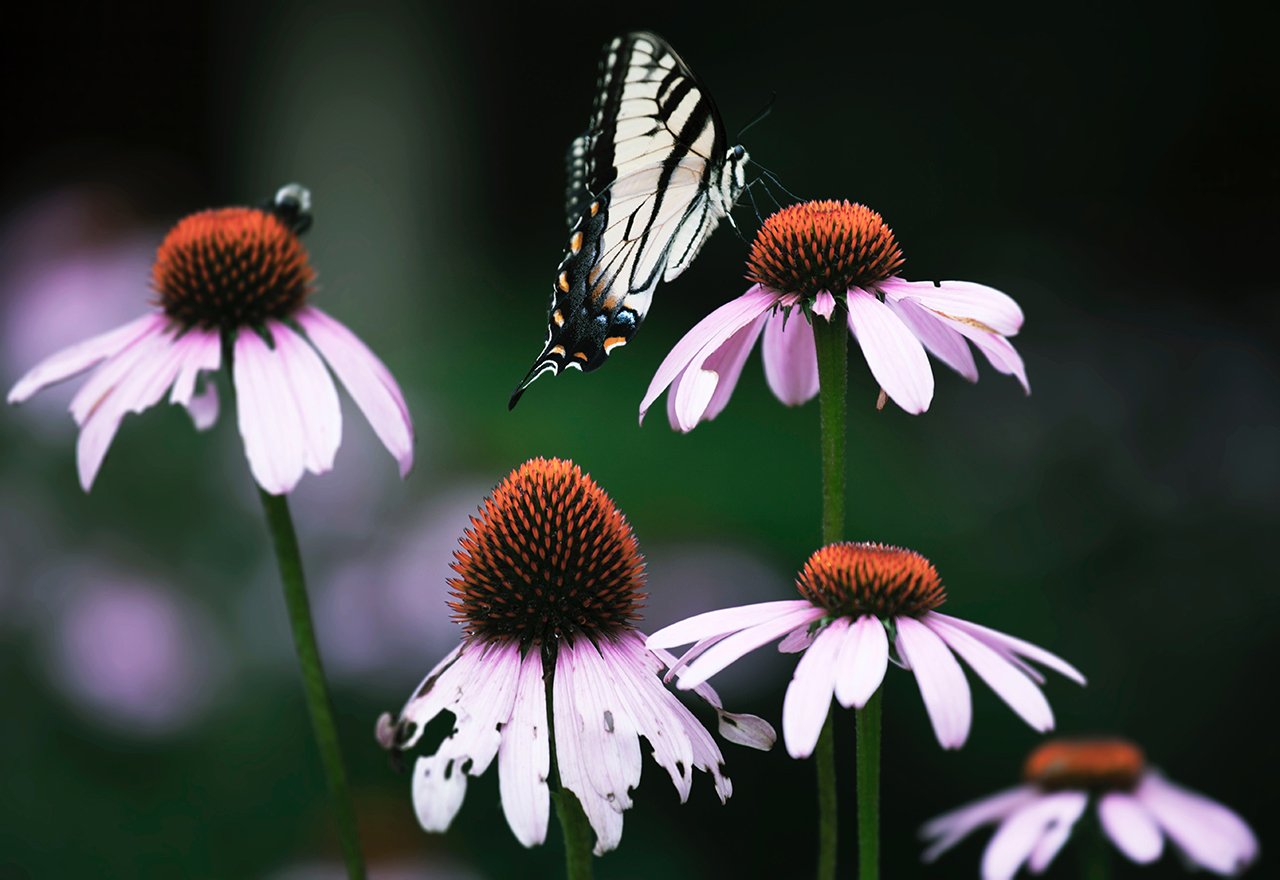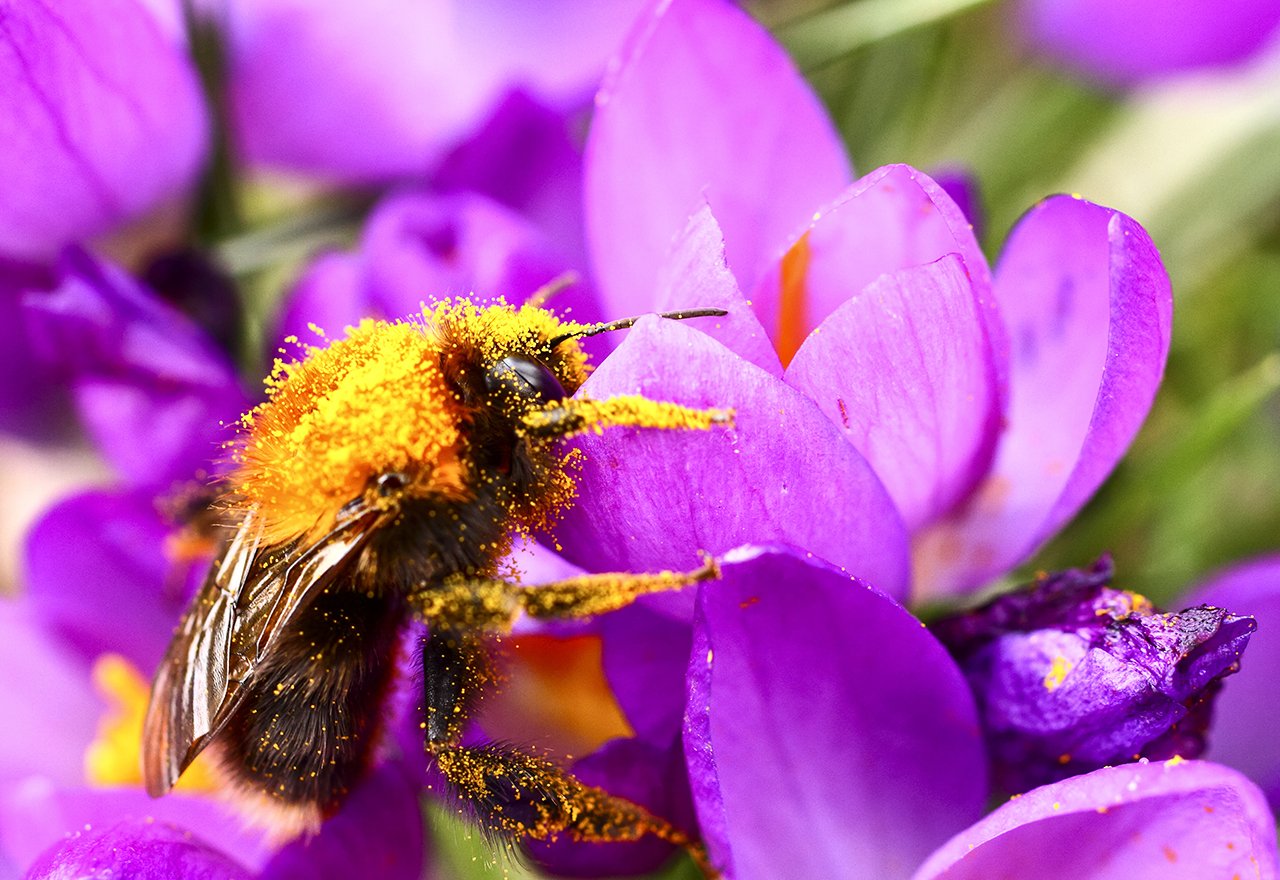Inviting Pollinators into Your Backyard
by Maureen Wise, on June 4, 2024
Pollination is a pretty basic, yet massively important, concept that we all learned about in elementary school. It’s the birds and bees of making food that uses birds and bees! By not using pesticides and by adding specific plants and features to your yard, you are creating a pollinator habitat. Inviting pollinators into your backyard can actually help the world’s food production!
How Pollination Works
Plants that reproduce via seeds need to spread their pollen around to produce offspring. The problem is, plants can’t move to hang out with other plants and so need help to transfer their pollen. To this end, they offer nectar, a sweet liquid that many insects and animals eat. Pollen itself is also high in protein and is sometimes eaten as well. These bugs and animals, pollinators, travel from flower to flower with pollen stuck on their bodies to collect more of their own food, while helping plants reproduce. The pollen gets manually transported by pollinators from one plant’s male anther to another flower’s female stigma and the other way around. The flower then grows a fruit or vegetable with seeds and can reproduce.
Introducing the Pollinators
Pollinators include humble, yet well-known, bees and bumblebees as well as many other insects including butterflies, ants, moths, beetles, wasps, and flies. Hummingbirds also are effective pollinators that move quickly from flower to flower. Some seed-eating birds such as chickadees and goldfinches will often take a sip of a hummingbird feeder but probably not bother with an actual flower. Bats in other parts of the world eat nectar and therefore act as pollinators, although the 14 bat species that live in Ohio do not.

Inviting pollinators into your backyard will help your own gardens grow and also help your local farm increase production, even many miles away. Bees and bumblebees are known to travel four or even seven miles away from their hives or home. One study found that 87 of the 115 crops they examined worldwide are directly pollinated by pollinators, unable to make their produce without them. Our food, the food that feeds that animals we eat, and the flowers we value, need pollinators. Sadly, bees and butterflies are on the decline, probably due to the over-application of pesticides. Your own backyard can be a sanctuary for pollinators with just a few small tweaks!
Choose your Flowers
Many plants native to Ohio are great for pollinators. These plants will not need extra watering and are already happy in our soil and climate. Because they are meant for this region, they will also need very little fertilizers and most of them are deer resistant! Here’s a good starting list:
- Black-eyed Susan
- Pink or Purple Coneflowers
- Bee Balm
- Wild Bergamont
- Turtlehead
- Blue Flag Irises
- Cardinal Flower
- Columbine
- Blazing Star
- Honeysuckle
- Yarrow
Bees also love the dandelions and clover in your lawn! Pumpkin and squash flowers in your veggie garden also especially attract pollinators, as do other veggie plants. Some additional non-Ohio native species include Zenia, Sunflowers, Butterfly Weed, Petunia, and Bleeding Hearts. Crab Apple, Tulip Poplar, and Dogwoods are flowering trees that attract the helpful flyers you’re looking for.
Remember your dwindling butterflies: Wild Lupine is the only host plant of the tiny Karner Blue Butterfly, which is declining in numbers and the many Milkweed varieties are imperative for the Monarch Butterfly’s lifecycle.

A wide diversity of pollinator-friendly plants with varying bloom times over the Summer is preferred. This way, bloom time is staggered over a longer time to keep the pollinators visiting during the entire growing season.
Add Some Water and Yard Features
Pollinators also need water to survive like all animals. Adding a birdbath or water feature to your yard will help attract the insects and birds you’re hoping to find.
Similar to lizards, butterflies like to sun them themselves, so adding rocks in a sunny spot may attract the insects. Additionally, you can install butterfly boxes, also called butterfly hibernation boxes, which are similar to birdhouses, but with a long, narrow opening. There is little evidence that butterflies actually use them, but it couldn’t hurt.
Bee boxes will attract solitary bees and are not the same as a beehive. These bees do not make honey, do not swarm, and do not sting. You do need to maintain bee boxes by cleaning them out annually. Here’s a great article from the UK about making your own bee box.
Once Established
Once you’ve got some flowers blooming, yard features installed, and the friendly insects and birds are visiting your yard, be sure to protect these plants. Do not be part of the problem and spray pesticides. We don’t want grubs or Japanese Beetles in our yard either, so using natural methods such as Neem Oil application is a much better choice than neonicotinoids. Find a list of alternatives in our Monarch Blog Post.
Will you be adding new yard features to attract pollinators? Do you have a favorite pollinator-friendly flower that we didn’t list?













